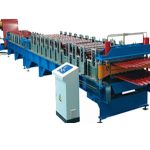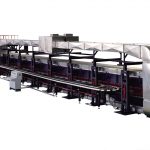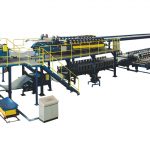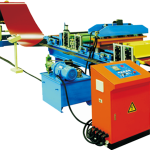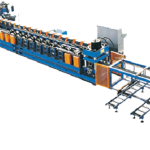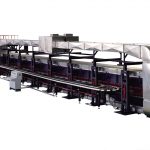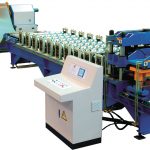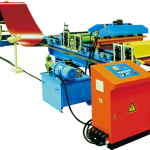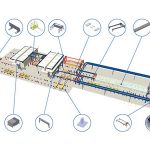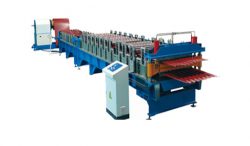What Are the Working Principles of Roll Forming Machines?
The working principle of the roll forming machines is driven by a motor, the main shaft rotates through the transmission system, and is driven by a three-jaw chuck. The main movement of the rolling machine is the rotation of the workpiece, and the longitudinal feed movement and the radial feed movement are realized by the rolling head.
1. How do Roll forming machines work?
The workpiece passes through the center hole of the rolling head, and three rolling wheels are uniformly distributed on the circumference of the rolling head, including one rolling wheel and two supporting wheels. Before work, the three rollers pass through the screw mechanism to make them radially approach and close to the workpiece, that is, centering. At the same time, the three rollers rotate in the same direction with respect to the workpiece with the same helix angle (the direction of rotation is the same as the spiral direction of the workpiece), and then the rolling wheel feeds in the radial direction.
When the roll forming machine is working, the workpiece rotates and the rollers are forced to roll relatively through friction force, and under the action of the axial force, the rolling head drives the tailstock carriage to move longitudinally along the bed rails.
During the movement of the roll forming machines, the annular shoulder on the rolling wheel contacts the workpiece, the blank is squeezed, stress concentration and plastic deformation occur, thereby forming a thread.
2. What are the advantages of roll forming machines?
The design, manufacture, and use of the roll forming machines saves a lathe for the factory, worth more than 100,000 yuan, and enables the lathe to exert greater functions. The emergence of the roll forming machines meets the requirements of mass production, the product quality is reliably guaranteed, and the pass rate is almost 100%; the operation is convenient, and there is almost no maintenance cost; the consumption is reduced, and the production efficiency is increased by more than 10 times.

